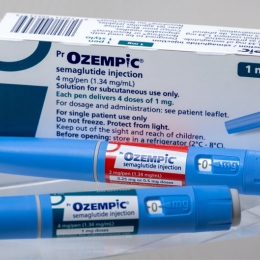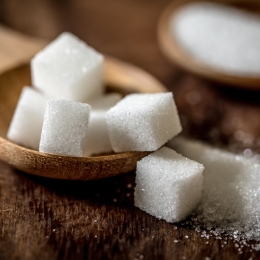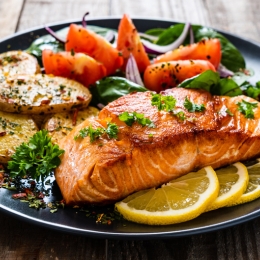10 steps to a heart-healthy diet
Not sure which foods protect (or harm) the blood vessels that feed your heart and brain? Here’s a rundown of the American Heart Association’s 10 recommendations to cut the risk of heart attack, stroke, heart failure, and maybe type 2 diabetes, memory loss, kidney disease, and more.
The big picture
“The big message here is that we’re focusing on dietary patterns, not individual foods or nutrients,” says Alice H. Lichtenstein, who chaired the AHA committee that issued the guidelines.
Two examples of heart-healthy dietary patterns: a Mediterranean diet and a DASH (Dietary Approaches to Stop Hypertension) diet.
“Our guidelines focused on cardiovascular disease, but there’s also evidence that the same dietary patterns are linked to a lower risk of type 2 diabetes, kidney disease, and cognitive decline,” adds Lichtenstein, who is director of the cardiovascular nutrition team at the Jean Mayer USDA Human Nutrition Research Center on Aging at Tufts University.
“They also make sense from an environmental perspective.”
And the advice isn’t only for those with heart problems.
“People shouldn’t think, ‘I’ll wait until I’m told I have high LDL cholesterol or high blood pressure to eat healthy,’” notes Lichtenstein. Because heart disease begins early in life, “healthy eating should start with young children.”
The AHA’s 10 recommendations:
1. Adjust calories in and out to reach a healthy weight.
“People say, ‘Well, that advice isn’t new,’” says Lichtenstein. “Yes, but we still haven’t managed to do it.”
Of course, people don’t gain—or fail to lose—excess weight simply because they don’t count calories or steps. Obesity is a complicated disease that researchers are still trying to understand.
But it doesn’t help that we’re surrounded by calorie-dense food at shopping malls, movie theaters, convenience stores, gas stations, ballparks, airports, amusement parks, and elsewhere.
“Food is ubiquitous,” says Lichtenstein. “And you have very little control over what’s in it.”
A reminder for adults: With each decade you age, you need 70 to 100 fewer calories per day.
“Even if you stay the same weight and you’re physically active, there’s still a shift to fat from lean muscle mass as you age,” says Lichtenstein. “Fat burns fewer calories than muscle, so you’re not going to need as many calories. And many people become less active when they get older.”
2. Eat plenty of whole fruits and vegetables.

“Fruits and vegetables lower blood pressure,” says Frank Sacks, professor of cardiovascular disease prevention at the Harvard T.H. Chan School of Public Health, who also served on the heart association committee.
In people with systolic blood pressure of 140 or higher, a diet rich in fruits and vegetables cut pressure by 7 points compared to a typical American diet.
A full DASH diet—which is not only rich in fruits and vegetables but also in other healthy foods—lowered blood pressure by 11 points.
“High blood pressure damages the blood vessel wall,” says Sacks. That helps explain why it boosts the risk of heart attack, stroke, and heart failure.
What makes fruits and vegetables such marvels? For starters, they’re full of potassium, which lowers blood pressure.
“They’re also full of cardioprotective substances like polyphenols, carotenoids, and fiber,” says Sacks.
But it’s the whole package, not those constituents, that matters.
“Companies sell fruit and vegetable concentrates in a pill or powder,” notes Lichtenstein. “Sprinkling them on a hot fudge sundae isn’t going to lower your blood pressure.”
Juice isn’t ideal, either. “The data suggests that when people chew solid food, they consume fewer calories than if they drink juice,” adds Lichtenstein.
And filling half your plate with fruits and vegetables leaves less room for pizza, burgers, burritos, fries, chips, and more.
“That’s what happens if, say, you have fresh fruit instead of a doughnut for breakfast,” says Sacks.
3. Go for whole, not refined, grains.
“People who consume more whole grains than refined grains have a lower risk of cardiovascular disease,” explains Lichtenstein.
“Part of it is due to the fiber that’s naturally present in the whole grain, and part is due to the phytochemicals in whole grains, which we don’t fully understand.”
“The intact fiber in whole grains also helps with GI motility,” she adds. “And we’re not consuming enough.”
But refined grains are still the default, and not just for fast food.
“Even at an upscale restaurant, you rarely see whole-grain bread on the table, you rarely see whole-grain pasta or a whole-grain rice,” Lichtenstein laments. “Yet I suspect that most people would eat whole grains if restaurants served them.”
4. Pick healthy proteins.
That means:

Mostly plants
“Plant proteins have higher amounts of healthy unsaturated fat and lower amounts of the saturated fat we should be limiting,” says Lichtenstein.
Nuts and beans lower LDL cholesterol in clinical trials, likely due to the healthy fats in nuts and soy and the soluble fiber in beans.
“And choosing plant proteins is better for the environment,” adds Lichtenstein. Animal foods, especially beef, have a larger carbon footprint than beans or nuts.
Low-fat or fat-free instead of full-fat dairy

“Clinical trials show that dairy fat raises LDL cholesterol,” says Sacks. “And LDL cholesterol is a direct cause of heart disease.”
How? “LDL gets into the artery wall and sparks a response that leads to cholesterol-rich plaque in the arteries,” he explains. “And that causes inflammation and cardiovascular disease.”
Heard that only “small” LDL is harmful?
“In good studies, large and small LDL work the same,” says Sacks. “They both cause plaque to build up in arteries.”
Bonus: Low-fat or fat-free dairy supplies the same potassium, calcium, and other nutrients as full-fat dairy for fewer calories.
“There’s no advantage to consuming full-fat dairy,” says Lichtenstein. “The evidence that it leads to greater satiety is weak.”
Seafood

People who eat at least two servings of fish per week have a lower risk of heart attack, stroke, and heart failure. That’s partly because fish (especially fatty fish like salmon or sardines) are rich in (polyunsaturated) omega-3 fats and partly because the fish replaces red meat.
If you eat meat or poultry, choose lean cuts and avoid processed meats.
“Red meat is high in saturated fat and low in unsaturated fat,” says Lichtenstein.
(Poultry is better, but it’s not as good as seafood or plant protein.)
And processed meats like bacon, sausage, hot dogs, and ham raise the risk of colorectal cancer, says the International Agency for Research on Cancer.
5. Use liquid plant oils.
Why replace saturated fats like butter, lard, and coconut, palm, and palm kernel oils with unsaturated plant oils like canola, olive, sunflower, and soybean?

“In the 1970s, intervention trials reported a lower risk of hard outcomes like heart attacks when they substituted unsaturated fat for saturated fat,” says Lichtenstein.
These days, studies look at the impact of fats on LDL instead.
“The higher the LDL cholesterol, the higher the risk of heart attacks, strokes, and other cardiovascular events,” says Lichtenstein. “And we know from drug studies using statins that lowering LDL cholesterol cuts the risk of those events.”
6. Choose minimally processed foods.

So far, ultra-processed foods have been linked to a higher risk of heart disease, stroke, type 2 diabetes, and weight gain.
“The data are extraordinarily consistent,” says Lichtenstein.
But most studies can’t be certain that ultra-processed foods—and not something else about the people who eat them often—explain the links to disease.
Only one trial has pitted an ultra-processed diet against an unprocessed diet. (People gained weight after two weeks on the ultra-processed diet.)
Still, ultra-processed foods are more likely to be unhealthy. “Many are high in refined carbohydrates like white flour and sugar,” notes Lichtenstein.
7. Minimize added sugars.
“Studies have linked added sugars to cardiovascular disease,” says Sacks.
And sugary beverages lead to weight gain in clinical trials.
“Other carbohydrates like whole grains and whole fruit have fiber and a better nutrient package,” says Sacks. “Added sugars have nothing but calories.”
8. Look for little or no salt.
Cutting sodium from 3,300 milligrams a day to 1,500 mg lowers systolic blood pressure by 7 points. That’s if you’re eating a typical American diet.
“Cutting sodium and eating a DASH diet is comparable to taking blood pressure-lowering medicine,” says Sacks.
The combination lowered blood pressure by 11.5 points in people who started with systolic pressure of 140 or higher and by 7 points in others.
The catch: It’s not just the salt shaker.
“People may think, ‘I don’t add much salt at the table or when cooking,’” says Lichtenstein. “But we get a tremendous amount of sodium from processed and packaged foods.”
9. If you drink alcohol, limit your intake.
Until recently, studies reported that people who had one or two drinks a day had a lower risk of heart attack and stroke than non-drinkers. But stronger evidence has eroded those findings.
“The data suggests that one should not consume alcohol to lower the risk of cardiovascular disease,” says Lichtenstein.
How did earlier studies get it wrong?
Light or moderate drinkers were more likely to exercise, eat a healthy diet, avoid excess weight, or have higher incomes than others. And nondrinkers may have included people who stopped drinking because of illness.
What’s more, says the American Heart Association, even if light drinking did protect the heart, alcohol’s impact on injuries, violence, digestive diseases, infectious diseases, pregnancy outcomes, and cancer would outweigh any benefit.
10. Follow this advice wherever you eat.
“It’s not only what you buy in a supermarket and prepare at home that matters,” notes Lichtenstein. “For many of us, the majority of our food is made outside the home.”
“Yet the same advice applies whether you’re eating out, having food delivered, getting meal kits that you prepare at home, or cooking at home.”
And most restaurant food is notoriously high in salt, refined carbs, and calories. Expect roughly 1,300 calories in a typical sit-down restaurant meal...not including appetizer, drink, or dessert.
How to eat a DASH-like diet
The DASH diet slashed blood pressure, but the OmniHeart trial made it better. OmniHeart pitted DASH against two diets that cut some of DASH’s carbs to make room for either more (plant) protein or more unsaturated fat. “Both lowered blood pressure and triglycerides more than the DASH diet,” says Harvard’s Frank Sacks. The diet below is a mix of the two OmniHeart diets. (It’s for someone who eats 2,000 calories a day. Scale up if you eat more.) For more details on what’s in this diet, check out our guide.

Support CSPI today
As a nonprofit organization that takes no donations from industry or government, CSPI relies on the support of donors to continue our work in securing a safe, nutritious, and transparent food system. Every donation—no matter how small—helps CSPI continue improving food access, removing harmful additives, strengthening food safety, conducting and reviewing research, and reforming food labeling.
Please support CSPI today, and consider contributing monthly. Thank you.
Continue reading this article with a NutritionAction subscription
Already a subscriber? Log in
More on heart disease
Take our quiz to help you stay healthy
Preventing Disease

Could Ozempic curb heart attacks & strokes?
Weight and Health

Tell the FDA: Reduce added sugars in US food supply
Government Accountability

How the Biden administration can transform food in federal facilities for millions of people
Government Accountability

New advice for the heart
Healthy Eating


